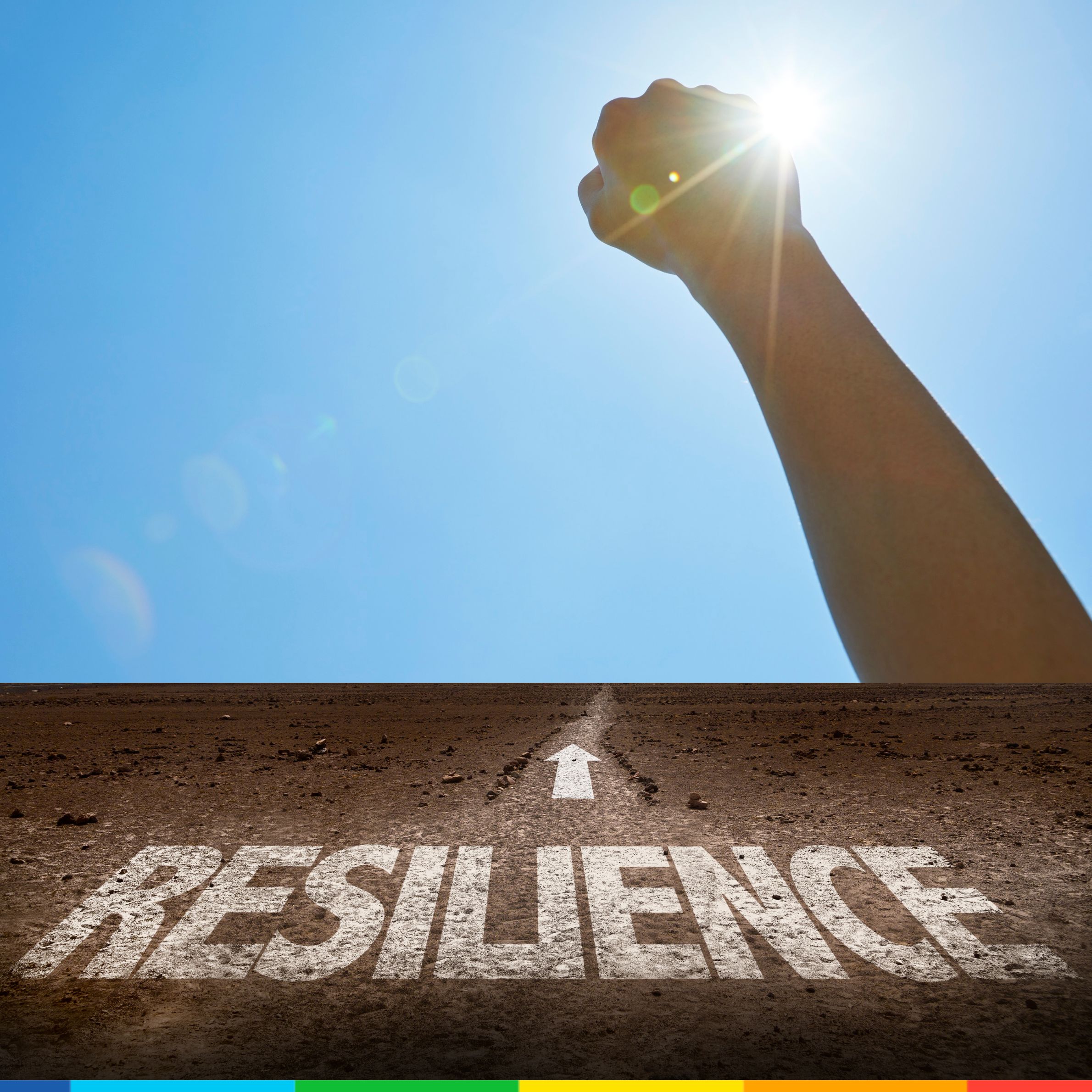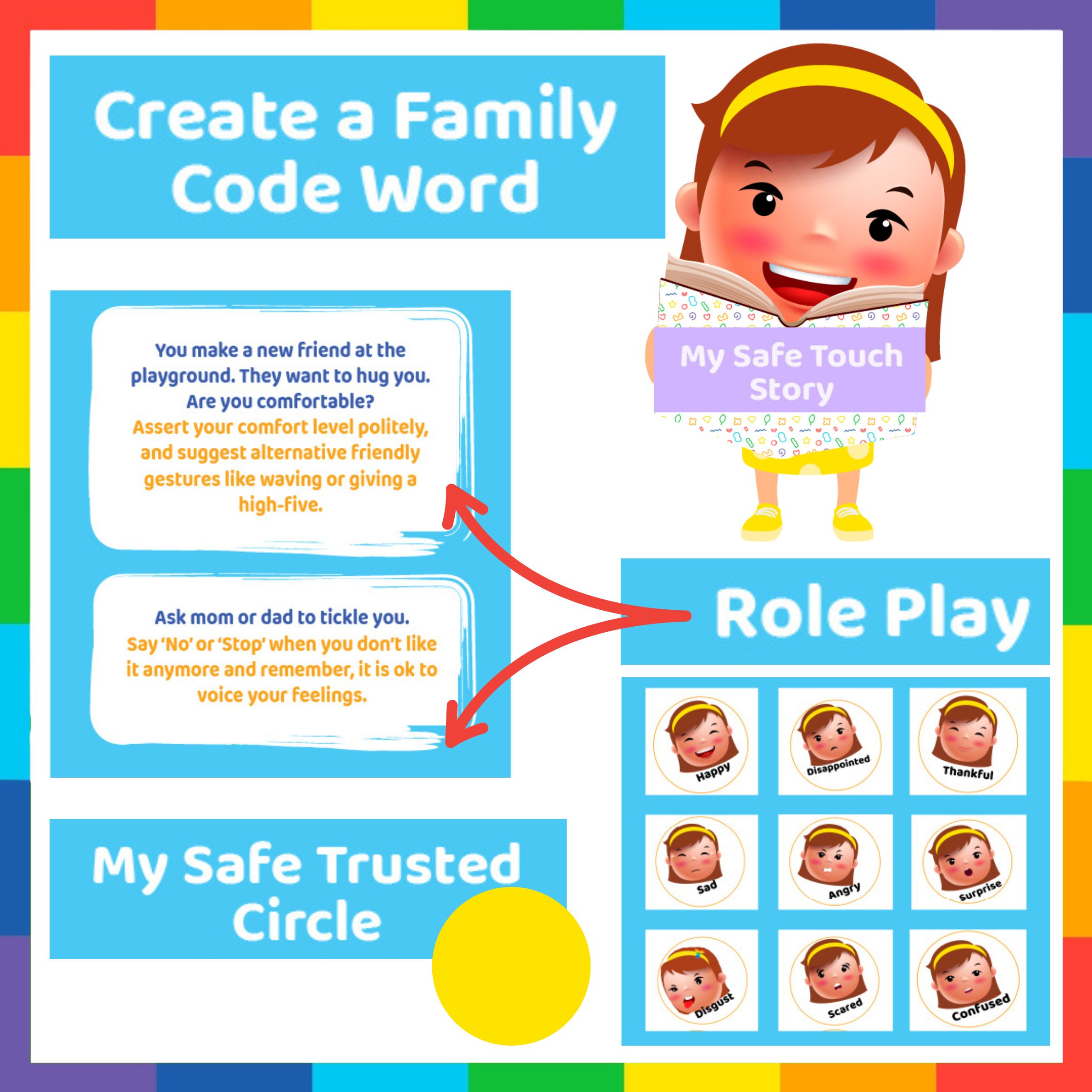
Quick Bites
How to Introduce Sex Education to Children at an Early Age?
February 9, 2025
Related
Topics

Hey
-

Resilience-Building – Easy Checklist for Kids of All Ages
August 13, 2025
-

-

How to Ensure Body Safety of Your Kids? – Summary
February 27, 2025
-

Debunk Common Myths About Safe Touch: Know the Truth
February 23, 2025
-

How to Reinforce Body Safety and Consent?
February 16, 2025
Ready for more?
Hey
Sign up for Rainbow Kiddies newsletters for more stories and updates
Introducing sex education to children at an early age requires sensitivity, and use of age-appropriate language. Most importantly, be focused on creating a safe and open environment for your child. As we mentioned in mindful parenting you know how much your kid can understand at their level. So, here are some conversation starters designed for caregivers like parents, teachers, grandparents, and others involved in a child’s care:
1. Body Awareness and Anatomy
- “Do you know the names of all your body parts? Let’s learn them together!”
- Use correct anatomical terms like “penis,” “vulva,” “vagina,” and “testicles” to normalize these words and remove shame. Meanwhile, buy our book on this topic – the best assistant to help you guide your kids aged 3 and above on this topic.
- “Our bodies are amazing, and each part has a special job. Do you want to know how the different parts work?”
- Encourages curiosity along with creating a foundation for understanding body functions.
2. Understanding Privacy and Boundaries
- “Do you know what private parts are? They’re the parts of your body that are covered by a swimsuit.”
- Helps children understand which parts are private and require protection. Again we suggest that you buy our book on this topic to be able to explain this to them easily. You may also watch this video on the same topic, with them.
- “Your body belongs to you, and you get to decide who can touch it. How would you tell someone if you didn’t like how they touched you?”
- Promotes autonomy and the ability to assert personal boundaries. Read this article to know how to train your little ones to be assertive and also to know about boundaries. Also watch the video and/ or read the book that we had already linked to earlier.
3. Teaching Consent
- “What would you do if someone wanted to give you a hug or kiss but you didn’t feel like it?”
- Initiates a discussion on consent and the importance of saying “no” when uncomfortable.
- “When you play with your friends, and you happen to hurt or make them feel uncomfortable by a touch, do you apologize to them?”
- Teaches the importance of respecting others’ boundaries. This includes touches like pinching, grabbing, pushing, pulling also.
- Introduce the concept of consent in simple terms. Explain that it means agreeing or not agreeing to something, and that they have the right to decide how they are being treated.
4. Preparing for Puberty – Major Milestone in Sex Education
- “Do you know how your body will change as you get older? It’s interesting to learn about how we grow!”
- Introduces the concept of puberty in a positive and non-intimidating way. This is a major milestone when it comes to sex education for children.
- Prepares them for puberty by talking about the changes they can expect, ensuring they feel informed and confident about their developing bodies. Kids often ask why all women have breasts. While addressing such queries, explain to them that after a certain age all women do develop breasts. You can even tell them that breasts are meant to feed babies if they would like to have kids later on in life. Further girls might hit puberty between ages 8 to 13, and boys between 9 to 14. Some kids tend to have early or delayed puberty also. Talk to your doctors if you feel there is a chance for early puberty. Also do so if you observe signs of delayed puberty. Read this article to know more about the signs which indicate start of puberty or related issues.
- “Have you ever wondered why adults look different from kids? I can tell you about the changes that happen when we grow up.”
- Makes the topic relatable and accessible. When puberty begins, girls will start growing breasts, hair in armpits and pubic areas. Menstruation will start only a year or 2 later. For boys, their voice, and body composition changes along with hair growth in pubic and other regions. Ejaculation might start only after a year or two. Always remember that boys need as much support during puberty as do girls. Involuntary ejaculations might cause panic in boys just like uninformed girls might get scared by periods. Furthermore, it could be traumatic for them if there is a lack of openness with some trusted grown-up or no-one to clear their queries. So it is very important that you inform kids about menstruation and ejaculation when you start seeing signs of puberty in them. Refer to the article linked above to learn about more signs of puberty and related disorders.
5. Addressing Curiosity About Reproduction
- “Do you know how babies are made?”
- Talk about it in a way that makes sense for their age. Give simple and factual explanations, adjusting the depth of detail based on the child’s age and understanding. Also depending on their age you could even tell them about parts like uterus which holds the baby inside a mother’s body. Imagine how you would address their queries if it was about the heart or brain. Address these questions also with the same mindset and make sex education easy and accessible for them. Most importantly, never make them feel that it is taboo to talk about such topics – they definitely should not have to talk in hushed voices at their homes about such topics.
- “Where do you think babies grow before they are born? Would you like to learn more about it?”
- Encourages natural curiosity and opens the door to discuss reproduction.
- Tailor your response to their developmental level. For instance, for younger children, a simple explanation like, “A baby grows from a tiny cell inside a special place in a woman’s body called a uterus,” may suffice. As they grow older, you can provide more detailed information. You can probably say that a uterus is something like a pea-pod which houses the baby until birth. It also provides the baby nutrition to grow in there. Babies cannot really eat food while in there. These are all useful information which will help them understand that babies are not actually delivered by storks or random birds, but they grow within their mother’s body. If you have pictures of them with their umbilical cord, you could show that to explain that’s through which they got their nutrition and oxygen delivered, while in the’s mother’s womb.
- Also read this article to know more about how to handle such situations.
6. Discussing Safety
- “What would you do if someone touched you in a way that made you feel weird or uncomfortable?”
- Prepares children to recognize unsafe situations and respond effectively.
- Further, empower them with strategies like saying “no,” leaving the situation, and telling a trusted adult immediately. Also, watch our video or read our book with your kid to help them understand this better.
- “Some secrets are fun, like a surprise party. But if someone asks you to keep a secret about touching or watching you or someone else – that makes you feel uncomfortable, you should always tell me. Do you know why?”
- Differentiates between safe and unsafe secrets.
- Encourage open communication by assuring them that they can talk to you or another trusted adult if someone asks them to keep an uncomfortable secret.
7. Encouraging Open Communication – Emphasizing Trust and Support
- “If you ever have questions about your body or anything else, you can always ask me. What would you like to ask or share today?“
- Creates an open environment where they feel safe to ask questions, reinforcing that curiosity about their bodies is natural and healthy.
- Also reinforces the idea that the caregiver is a safe and supportive resource.
- “Sometimes we hear things from friends or the internet that can be confusing. If that ever happens, you can come talk to me, okay?”
- Reassures children that they can seek clarification from trusted adults.
- “Even if you’re worried or confused about something, I will always believe you and help you figure it out.”
- Further strengthens the trust between the child and caregiver.
8. Handling Peer Pressure – has a role to play in sex education
- “What would you do if a friend dared you to do something that made you feel uncomfortable? Let’s talk about it.”
- Teaches children how to handle situations involving peer pressure. Also teach them about consent, assertiveness and that it is okay to say ‘No’ without feeling any shame or guilt.
- “Do you know it’s okay to say ‘no’ even if your friends say ‘yes’? Always remember, your feelings are important, and you don’t have to do anything that feels wrong to you.”
- Builds confidence in making independent decisions.
9. Respecting Differences
- “Did you know everyone’s body is different and special? Isn’t that amazing?”
- Promotes body positivity and also reduces stigma around physical differences.
- “Have you noticed that some families have two moms or two dads? All families are different, and that’s okay.”
- Introduces inclusivity and diversity in relationships.
- “Why do you think boys’ and girls’ bodies look different?
- Discuss the physical differences between sexes in a factual and non-judgmental way, thus reinforcing that all bodies are unique and should be respected. Kids as small as 3 years old might ask why boys stand and pee while girls sit to pee. Name their relevant body parts (urethra and penis) and help them understand why our bodies work differently. This will take away the feeling of shame/ embarrassment and help them talk openly about such topics with you.
Key Considerations while Introducing Sex Education
- Age Appropriateness: Tailor the conversation to the child’s developmental stage.
- Non-Judgmental Approach: Avoid reacting negatively to questions or statements to ensure the child feels safe sharing.
- Normalize Curiosity: Encourage open-ended questions and validate their natural curiosity about their bodies and relationships.
- Repetition and Consistency: Reinforce concepts over time through regular, casual conversations.
Starting these conversations on sex education early equips children with the knowledge, confidence, and support to navigate their own development and relationships safely. If you have not started such conversations yet, wait no more. As a first step to start a comfortable dialogue on sex education watch our video with your kid, or read this book with them(from amazon). You can also get this book at multiple other digital stores.
Sign Up for your Free Parenting Guide: “10 Everyday Ways to Raise an Emotionally Strong Child”

